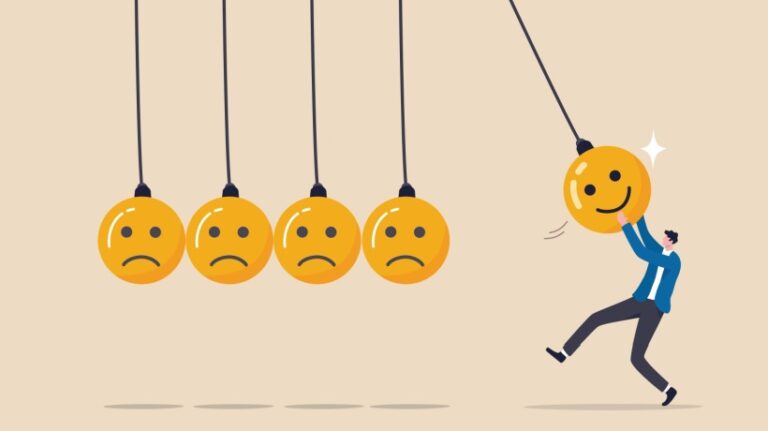
The hidden causes of workplace communication: Stress and mood
In today’s fast-paced work environment, stress and mood play an important role in shaping communication dynamics between employees. Understanding how these factors affect workplace interactions can help organizations foster better collaboration and productivity. Let’s cut through the fine print and get to the nitty-gritty of how stress and mood can wreak havoc on workplace communication.
stress factors
Stress is an ever-present challenge in the modern workplace, and its effects on communication are profound. When employees are under pressure, communication breakdowns can occur, such as:
breakdown of communication
Stress often leads to miscommunication or a complete lack of communication. Team members may withhold information, rush through tasks, or misinterpret messages. This can lead to errors, missed deadlines, and an overall decrease in the quality of work. Decreased trust and psychological safety
High-stress environments can make team members more wary and less willing to be vulnerable or ask for help. This undermines the psychological safety that is essential for open and honest communication. Impaired decision making
Stress can narrow your focus to what seems most urgent and cause you to overlook important details and solutions. This lack of perspective can lead to hasty or ill-informed decisions that impact the entire team. Stress: Silent Disturber
When you’re stressed out, your office becomes a pressure cooker. It boils and burns everyone in its path. Here’s how:
communication meltdown
Stress causes people to become busy or rush through their work. The message becomes garbled. Deadlines pass quickly. The quality of work plummets. Trust goes out the window
Doubt arises in high stress environments. People cringe, afraid to ask for help. Open communication? Forget it. failure of decision making
Stress narrows your focus. People are missing the big picture. A hasty decision will ripple through the team like a bad food poisoning.
mood effect
An employee’s mood, whether positive or negative, greatly influences their communication style and effectiveness.
positive mood
When employees are in a good mood, they tend to be more engaged, motivated, and productive. They may communicate more effectively and show increased creativity and improved problem-solving skills. negative mood
Conversely, negative moods can lead to decreased motivation, increased absenteeism, and interpersonal problems. Employees have a hard time focusing and making good decisions, which can affect the overall team dynamics. Mood: Invisible Puppeteer
Your mood dictates your communication style. The breakdown is as follows:
magic of good mood
Happy employees are more engaged. They solve problems creatively. Communication flows like a well-oiled machine. bad mood blues
A negative mood can make anyone feel depressed. My motivation plummets. A conflict breaks out. The whole team is suffering.
The interaction of stress, mood, and workplace communication: Spillover effects.
The emotional state of leaders and team members can be contagious throughout the workplace.
emotional contagion
Research shows that emotions, especially negative emotions, can spread quickly within teams. Leaders, in particular, have a huge influence on the emotional climate of their teams. Impact on creativity
Negative moods and high stress levels can inhibit innovation and creativity. Teams often fall back on safe, status quo solutions rather than exploring new ideas.
Emotions spread like wildfire in the office. One person’s bad day can affect the entire team. Leaders, be careful! Your mood determines the mood of others.
Strategies for improvement
To reduce the negative impact of stress and mood on workplace communication, organizations can implement several strategies.
Increase emotional intelligence
Train your employees to not only recognize and manage their own emotions, but also to understand the emotions of others. This allows for more empathetic and effective communication. Encourage stress management
Provide resources and training on stress management techniques to help employees cope with workplace pressures. Foster a positive work environment
Create opportunities for positive interactions and celebrating successes, increasing overall atmosphere and team cohesion. Improve leadership communication
Train leaders to recognize their emotional impact and communicate clearly and collaboratively, especially during times of high stress. Implement regular check-ins
Establish a culture of open communication where employees feel comfortable discussing their stress levels and emotional states. Please fix it immediately
Want to stop this communication disaster? Try these:
Increase your emotional IQ
Teach people how to read their own and other people’s emotions. Watch your communication improve. Reduce stress for your team
Arm your employees with stress relief techniques. They will be able to handle pressure well. cultivate positivity
Create opportunities for victory and celebration. Watch your team’s spirit grow. lead clearly
Train your leaders to communicate clearly, especially when it’s hot. Check in regularly
Make it normal to talk about stress and emotions. Open the floodgates of communication.
conclusion
By addressing the interplay of stress, mood, and communication, organizations can create a more harmonious and productive workplace. Remember that effective communication is not just about exchanging information, but about understanding the emotion and intent behind the information. As the workplace continues to evolve, prioritizing emotional well-being along with clear communication will be key to success.
Remember, good communication is more than just exchanging information. Delve into the emotions and intentions behind the words. Master this and you’ll set yourself apart from your competitors.


